The Flux Cored Wire and the Importance of a Good Coating
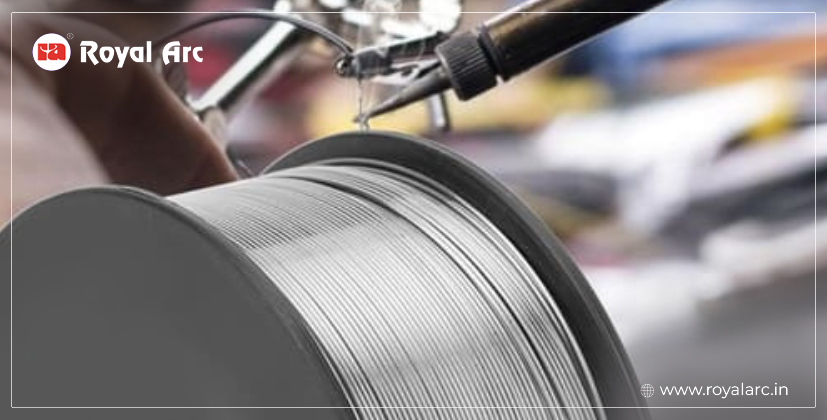
Flux cored wires play an essential role in the welding process. If you want the most out of your welding process, you must understand how coatings affect it! In this blog post, we will discuss the different types of coatings and why they matter. We will also look at some of the top coatings for flux-cored wire and explain why they are so popular. What Is Flux Cored Wire Welding? Flux-cored wire welding is a type of welding that uses a self-shielding wire to create an electrical arc. The arc helps in melting the metals that are yet to join together. This type of welding is typically used on thicker pieces of metal because it can penetrate deep into the metal.Flux-cored wire welders are portable and help in various settings, including outdoors. It makes them ideal for welders who are always on the go or work in difficult-to-reach places. They do not require an external gas tank as MIG welders do. The Importance of a Good Coating A flux cored wires is different from other types of welding wires. A good coating is essential to get the most out of your flux-cored welder. The coating protects the wire from rust and corrosion.Flux-cored wire coatings are essential because they provide several benefits that improve the welding process. For example, flux-cored wire coatings can help to:– Reduce spatter– Improve weld quality– Increase productivity– Protect against corrosion– Reduce welding costs By reducing spatter, welders can achieve a neater, more professional-looking finish on their projects. And by improving weld quality, they can ensure that their work will withstand the test of time and stand up to the rigours of use. Ultimately, increased productivity and reduced welding costs are two more reasons why flux-cored wire coatings play a vital role in the welding process.So, if you want to improve your welding quality and efficiency, invest in a good flux-cored wire coating. Different types of coatings Zinc Coating Zinc is the most common type of coating used on flux-cored wires. It provides excellent corrosion resistance and is also relatively inexpensive. Zinc coatings can be either thin or thick; thin zinc coatings offer good corrosion resistance but are not as durable as thick zinc coatings. Thick zinc coatings, on the other hand, provide excellent resistance to corrosion and abrasion but can be more expensive.Zinc flux cored wire is designed for use with gas-shielded MIG welding machines. The main advantage of using this type of wire is that it provides a higher level of weld penetration than other types of wires. It is ideal for welding thicker materials or in difficult or hard-to-reach places. Another advantage is that it can be used on various metals, including aluminium, stainless steel, and cast iron. Aluminum Coating Aluminium is another type of coating used on flux-cored wires. It offers good resistance to corrosion and is also relatively lightweight. However, aluminium is a softer metal than zinc and doesn’t provide as much protection against abrasion. Stainless Steel Coating Stainless steel is the third type of coating used on flux-cored wires. It offers excellent resistance to both corrosion and abrasion. Stainless steel is also a more expensive option than both zinc and aluminium.So, what’s the difference between these two types of wires? Aluminium flux cored wire is designed for gasless MIG welding machines, while zinc flux cored wire is designed for use with gas-shielded MIG welding machines. The two wires are very similar and help in various applications. Takeaway The three most common types of coatings used on flux-cored wires. As you can see, each coating type has its unique set of benefits. When choosing a coating for your project, be sure to consider your project’s specific needs to select the best option for you.
What Kind of Materials Do We Use for a Strip-Clad Weld?

The strip cladding welding process helps in manufacturing steel tubes and pipes. This article will talk about the problems with strip cladding welding and how to deal with them. Electroslag Strip Cladding is a process that involves using an electric arc and molten steel to create a molten bath of steel. The molten steel is then passed through a refractory-lined pipe and deposited on the surface of the workpiece. Electroslag Cladding is commonly used to clad steel, stainless steel, and aluminium. The advantages that Electroslag Strip Cladding offers are as follows: -Reduced dilution rate-Improved corrosion resistance-Increased productivity-Minimized heat distortion-Fewer AWS defects-Reduced risk of thermal injury Common problems associated with the strip cladding process The materials used in strip cladding welding are not very reliable, which is one of its problems. This can cause some gaps and cracks in the welded segments. To solve this problem, you need to ensure you use good materials for cladding. You can also make sure that the cladding is thick enough so there will be no cracks or gaps. Mild steel is used in the manufacturing process with a specially-made alloy. It is an effective method that provides a low-cost solution that still meets the needs. The process consists of two steps: first, the heating of steel and then cooled in a nitrogen gas atmosphere. The process can be done on-site or in the factory, and it can be adapted to suit any size or shape of the product. As a result, businesses must develop corrosion- and wear-resistant components capable of withstanding a longer lifespan. Strip cladding methods cover unalloyed or low-alloyed base material with an alloyed cladding. In strip cladding, you need to consider two primary factors Concentration rates Dilution level These parameters influence the metallurgical integrity and economic viability of any clad surface. However, these processes have rapid deposition rates, low dilution, and high-quality deposits. The working process Electro slag Cladding is an industrial process that coat metal with a protective layer of slag. This process is one of the most popular in steel production. Submerged Arc Strip Cladding is also an industrial process that is useful to coat metal with a protective layer of slag. However, the difference between this process and Electro slag Strip Cladding is that the Submerged Arc Strip Cladding does not use graphite electrodes and instead uses a gas shield to protect itself from air-born particles. Zinc Strip Cladding is an industrial process that coat metal with a protective layer of slag. This process uses a zinc sponge submerged in the molten zinc bath. The zinc sponge has pores that allow oxygen gas to infiltrate into the bath. It pick up slag particles from the surface of the metal Conclusion Electroslag Strip Cladding process can double travel speed, significantly boost deposition rates, and decrease dilution rates for fabricators and manufacturers who use an automated process. These productivity and efficiency advantages of Electroslag Strip Cladding, in conjunction with the decreased use of welding flux and strip, can help businesses save money and time, becoming more competitive and profitable. Are you looking for reliable electro slag strip cladding? Get in touch with us!
Flux Cored Wires: The Next Step in Industrial Applications
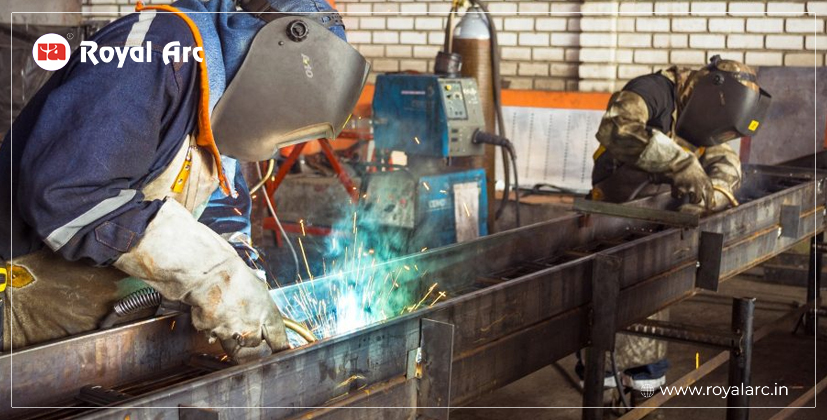
What is Flux Cored Wire, and how does it work? A flux cored wire is a type of wire that encompasses two or more layers of metal with an insulating layer in between. The insulation helps in preventing the metals from touching each other. This type of wire is helpful in electronics and power distribution systems. A cored wire manufacturing process involves cutting the wires into a bundle and then separating the individual wires by cutting them at different angles so they separate easily. The wires roll up into a tube before being cut into shorter lengths for easier handling and packaging. What is Flux-cored Wire Made From? A flux-cored wire is a blend of steel core and a copper or aluminium coating. The flux cored wire are beneficial in making electric power cables and electrical power transmission lines. The most common application for flux-cored cable is the construction of overhead power lines, which comes in two layers of the flux-cored cable. How Is It Better Than Traditional Conductive Wires? Flux cored wires are conductive wires that have a flux core in them. They are more durable than traditional conductive wires and are more efficient. The flux cored involves a thin layer of magnetic material on the outside, which helps in reducing the amount of resistance in the wire by as much as 98%. The flux cored wire manufacturers provide wires less resistance to conduct electricity more effectively. They also come with a copper coating that prevents oxidation, which is the main cause of damage in conductive wires. Flux-cored wires are more durable and efficient than traditional conductive wires. A flux-cored wire is a conductive wire that comes with a flux core. The flux-cored of the wire reduces resistance which allows the wire to transmit electricity more efficiently and with less resistance than traditional conductive wires. Why Are Companies Switching to Conductive Wire Technology? Conductive wire technology is a new technology that revolutionizes the way companies operate. It is a great tool for improving efficiency and productivity in the workplace. Conductive wire technology is an innovative solution to the problem of wire clutter and more time consumption. As mentioned before, many industries use the flux cored wire to improve efficiency and productivity. For example, in the construction industry, a conductive wire ensures that no wires are lying around when workers are working on different projects. The advantages of this new technology are numerous. Still, one of the biggest advantages of using conductive wire is that it does not require any extra effort or time from employees because it does not require any training to use it properly. This makes conducting business more efficient and effective than ever before! The conductive wire technology is a new technology that revolutionises how companies conduct business. It’s a great tool for improving efficiency and productivity in the workplace. How Flux-Cored Wires Can Help with Amazing Use Cases Flux-cored wires are a new technology for manufacturing. They consist of copper core and steel jacket with flux on the surface. The flux acts as insulation to help prevent electrical arcing and fires. 1) Electronics manufacturing companies mainly use flux-cored wire to help avoid electrical arcing and fires. The flux core wire helps prevent sparks from jumping across the gap between two conductors, which can occur when using traditional bare copper wire. 2) High voltage power lines mainly used flux-cored wire, which is safer because it prevents arcing and fire hazards. 3) A flux cored wire can also make it easier to manufacture smaller electronic parts because the core is much smaller in diameter than traditional cored wire, which means that it requires less wires. The resulting product can have a higher quality. A flux-cored wire is safer for manufacturing because it prevents arcing and fires. Flux-cored wires are also helpful for smaller electronic parts that require less material to manufacture and have a higher quality output. Ferrous materials such as steel, iron, and copper are the most common materials used in making cored wires. In these types of cored wires, the core consists of a wire surrounded by an electrically conductive metal coating. This core provides the electrical connection between two points on a conductor. The coated surface has an insulating layer around it Are you looking for reliable flux cored wire manufacturers? Get in touch with us!
How to Improve Flux-Cored Wire Performance with These Tips and Tricks
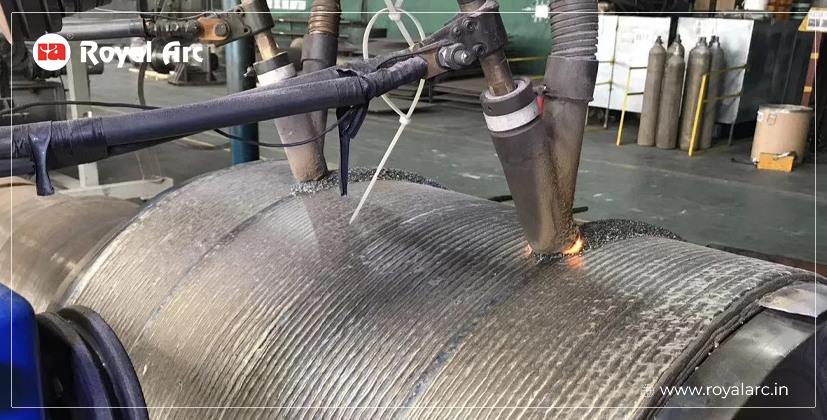
Flux Cored Wire is used in the manufacturing of steel. It is made from alloyed iron, carbon, and silicon. Moreover, it is one of the most popular and widely used wire systems. It is a great choice for those looking for a wired system that can provide excellent performance. Tips to improve the performance The following are some tips to improve flux-cored wire performance:– Make sure that your flux cored wires have no kinks or bends. This will allow the wire to move freely when you are using it.– Make sure that your flux-cored wires have good tension to not break during use. If you notice that your wires are breaking, you should replace them immediately as they will not last long with low tension.– Keep your flux-cored wires clean at all times, so they don’t lose their effectiveness over time and cause fraying or shorting out– Store your flux cored wire in a cool and dry place to continue to work effectively.-Make sure that the material is clean.-Provide a temperature range for the material to be used in.-Provide a temperature range for the environment in which the wire will be used in.-Ensure that there are no contaminants on the surface of the wire. What are the benefits of flux cored wire? The flux cored wire is used in many industries such as electrical, construction, mining, and manufacturing. The benefits of flux-cored wire are that it’s easy to strip and doesn’t have corrosive properties. The cored wire also has high conductivity and is relatively inexpensive. The drawbacks of wire are that it’s difficult to twist together, has a lower resistance when conducting current, and has higher electrical resistance if not properly insulated. Use Lower Tension on the Cord There are many ways you can use a lower tension on the cord. One way is to loop it around your wrist and tie it in the front of your hand. This creates a stronger knot that will not slip out of your hand. Another way is to wrap the cord around your fingers and thumb and then loop it around your wrist, creating a knot that will not slip out of your hand. A third way is to tie the cord around the wrists and loop it in front so that the knot is easily approachable. These are just a few ways of creating a knot with less tension on the cord. Experiment with different knots and see which one works best for you. Which Type of Fuse Should I Choose for My Application and Why? The fuse capacity ratings of a power strip are the number of amps it can handle before it blows. The type of fuse you choose depends on your application and what you are trying to protect. When choosing an application, consider the size and weight of the device. If you have a large appliance that needs protection, like an oven or refrigerator, use a heavy-duty fuse. It requires protection for one or two smaller devices, use a medium-duty fuse. If your device doesn’t have any specific requirements for the type of fuse needed, then use a general-purpose fuse with amp ratings between 15-20 amps. Select the Correct Wire Size A wire size chart is a helpful tool for the wire selection process. Depending on the application, you will need to use a different gauge wire size. The gauge of the wire refers to its thickness or diameter. The larger the diameter, the smaller the number of strands used in making it. For example, a 14-gauge wire has four strands, while an 18-gauge wire has two strands. When selecting an appropriate power cord size for your project, you should consider how many amps your device requires and how much wattage is needed. The Road Ahead of the Future of Flux-Cored Wire Manufacturing In the future, we will see many changes in the flux-cored wire manufacturing market. The way companies make their products has been changing, so has the way consumers buy them. The flux-cored wire manufacturing market is expected to grow with a CAGR of 19.7% from 2017 to 2024. This is because of the increasing demand for high-quality and low-cost products. The key players in this market are trying to stay ahead of their competitors with innovations in technology, product quality, and marketing strategies. Many factors are driving the flux-cored wire manufacturing market. For instance, the demand for high-quality and low-cost products has been increasing. The flux-cored wire manufacturing market is also predicted to grow with a CAGR of 19.7% from 2017 to 2024 because of increased investments in research and development for product quality and marketing strategies.
Welding Electrodes: Your Guide to the Different Types and Applications
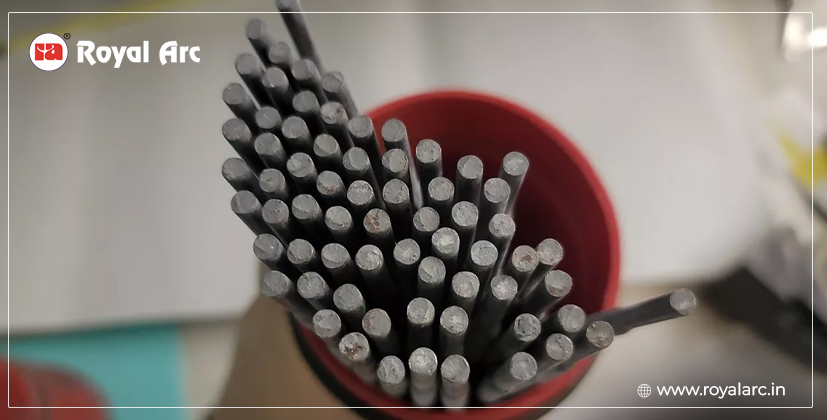
Welding electrodes are an essential element in the welding process. There are different types of welding electrodes and the applications differ for each electrode type. The blog also provides insights on selecting the right welding electrode. Different types of welding electrodes and their applications The two main categories of electrodes – Bared and Covered. Bare Electrodes: Bare welding electrodes are the most basic type of electrode. They are metal rods with a pointed tip that create an electrical arc between the electrode and the metal. These electrodes do not come with coatings or materials, making them more affordable than other types of electrodes. They also tend to produce more dangerous fumes and be more difficult to use. Covered Electrodes: Covered welding electrodes have a coating of flux around the metal rod. This flux helps to protect the weld from contaminants and provides a slag that makes it effortless to remove after the weld is complete. These electrodes are more expensive than bare welding electrodes but are much easier to use and produce less dangerous fumes. Welding electrode manufacturers offer electrodes in various sizes, shapes, and materials. The type of electrode you choose will depend on the application you are using it for. Different industries have different requirements for welding electrodes. For example, the automotive industry often uses covered welding electrodes because they produce fewer fumes and are easier to use. The aerospace industry often uses flux-cored welding electrodes because they produce fewer fumes and provide a removable slag after the weld is complete. No matter what industry you are in, there is a welding electrode that is right for you. With so many options available, it is essential to do your research to find the best welding electrode for your specific application. Most common types of electrodes The most common type of welding electrode is the Stick electrode. Stick electrodes come with a metal core covered with a flux coating. The flux coating helps to protect the weld from contaminants and provides an arc-stable connection between the electrode and the workpiece. Stick electrodes are available in various diameters, lengths, and core materials. The most common diameters are 0.045 inches (0.114 cm) and 0.0625 inches (0.158 cm). The most common lengths are 18 inches (45 cm), 24 inches (61 cm), and 36 inches (91 cm). The next type of welding electrode is the Wire electrode. Wire electrodes come with a metal core covered with a flux coating. The diameters are 0.035 inches (0.089 cm) and 0.045 inches (0.114 cm). The length is 36 inches (91 cm). Wire electrodes help in all welding processes, including gas metal arc welding (GMAW), flux-cored arc welding (FCAW), and gas tungsten arc welding (GTAW). The last type of electrode we will discuss is the Flux-cored electrode. Flux-cored electrodes come with a metal core covered with a flux-filled tubular casing. The flux helps to protect the weld from contaminants and provides an arc-stable connection between the electrode and the workpiece. Flux-cored electrodes are available in various diameters, lengths, and core materials. The most common diameters are 0.035 inches (0.089 cm) and 0.045 inches (0.114 cm). The most common length is 36 inches (91 cm). All welding processes use flux-cored wires, including gas metal arc welding (GMAW), flux-cored arc welding (FCAW), and gas tungsten arc welding (GTAW). Selecting the right electrodes for your needs The first thing you need to do is determine the type of weld you will be performing. Are you going to be doing a fillet weld or a butt weld? Fillet welds helps in joining the two pieces of metal at an angle, while butt welds join two pieces of metal that are flush. Next, you need to determine the thickness of the metal you will be welding. The thicker the metal, the larger the diameter of the electrode you will need. Finally, you need to select an electrode compatible with the welding machine type you are using. Stick electrodes benefit fillet welds on thin metals, while wire electrodes help fillet and butt welds on thin or thick metals. Similarly, flux-cored electrodes support butt welds on thick metals. Are you looking for reliable welding electrode manufacturers? Get in touch with us!
Welding Electrodes: Interesting Facts You Should Know
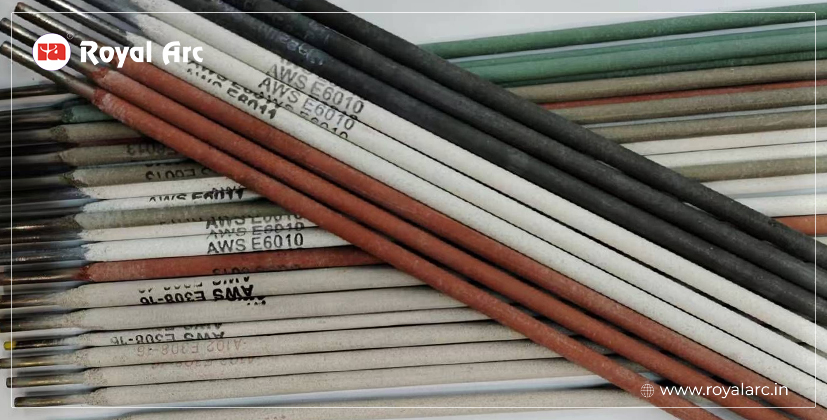
Welding electrodes are an essential part of the welding process. They provide the necessary heat to fuse metals, and various types are available on the market. This blog post will discuss 11 interesting facts about welding electrodes that you should know! A brief on welding electrodes The choice of welding machine depends on the application and welding. For example, portable welding machines are better suited for light-duty applications, while stationary welding machines are better suited for heavy-duty applications. The three most common types of electrode materials are carbon steel, stainless steel, and aluminium. Carbon steel is the most common type of electrode material. It is suitable for a wide range of applications and is relatively inexpensive. Stainless steel electrodes are suitable for welding stainless steel and other high alloy steels. In the same way, aluminum electrodes are suitable for welding aluminum and other non-ferrous metals. The choice of electrode material depends on the application and the type of welding metal. For example, carbon steel electrodes are unsuitable for welding aluminium because they cause corrosion. Tig welding is a gas tungsten arc welding process that uses a non-consumable tungsten electrode. This type of welding is suitable for thin metals and produces high-quality welds. Mig welding is a metal inert gas welding process that uses a consumable wire electrode. This type of welding is suitable for a wide range of applications and applicable on thicker metals. Arc welding is an electric arc welding process that uses a consumable electrode. This type of welding is suitable for many applications but produces lower-quality welds than Tig or Mig Welding. Types of welding electrodes The three most common types of electrode coatings are bare, metal-cored, and flux-cored. Bare electrodes have no coating and are the cheapest type of electrode. However, they also have the shortest lifespan and are not as versatile as other electrode types. Metal-cored electrodes have a metallic coating that helps to improve arc stability and increase weld penetration. These electrodes are more expensive than bare electrodes but offer greater versatility and a longer lifespan. Flux-cored electrodes have an outer flux coating that protects the weld area from contamination. These electrodes are more expensive than bare and metal-cored electrodes but offer the best arc stability and weld penetration. Welding electrodes come in a variety of different sizes and shapes. The most common type is the round or “stick” electrode. Stick electrodes are available in various diameters, from small (less than ¼ inch) to large (up to ½ inch). Interesting facts on welding electrode There are also flat or “strip” electrodes. Strip electrodes are available in widths ranging from ¼ inch to ½ inch. The length of welding electrodes varies depending on the type and size of the electrode. For example, stick electrodes typically range from 12 to 36 inches long, while strip electrodes can be up to 72 inches long. The majority of welding electrodes comes from carbon steel. However, you can use other materials such as stainless steel, aluminium, and titanium. The type of welding electrode you use will depend on the materials you are welding and the type of welding machine you are using. For example, some electrodes specifically suitable for MIG (inert metal gas) welders, while others are suitable for TIG (inert tungsten gas) welders. Cleaning welding electrodes becomes essential to function properly. Before using an electrode, ensure to clean with a wire brush or sandpaper to remove any dirt or debris. Once clean, the electrode should be dipped in water to prevent it from drying. If an electrode becomes wet, remove from the welding machine and allow it to dry before continuing. Welding electrodes are available in various grades, depending on the intended use. For example, some electrodes are designed for general-purpose welding, while others are better suited for specific applications such as stainless steel or aluminium welding. Iron oxide (FeO) or manganese dioxide (MnO ) is the most common welding electrode coating. These coatings help protect the electrode from oxidation and improve its arc stability. Other types of coatings include zinc (Zn ), silicon bronze (SiBr ), and chromium oxide (CrO ). It is recommended to store welding electrodes in a cool, dry place. Exposure to moisture may damage and affect the functioning. How often does it requires replacement? Welding electrodes require regular replacement to ensure optimal performance. The replacement frequency will depend on the type of electrode and the amount of use it sees. For example, general-purpose electrodes typically need to be replaced every few years. months, while more specialised electrodes may only need replacement once or twice a year.
Flux cored Wire Performance Optimization: Tips to Increase Productivity
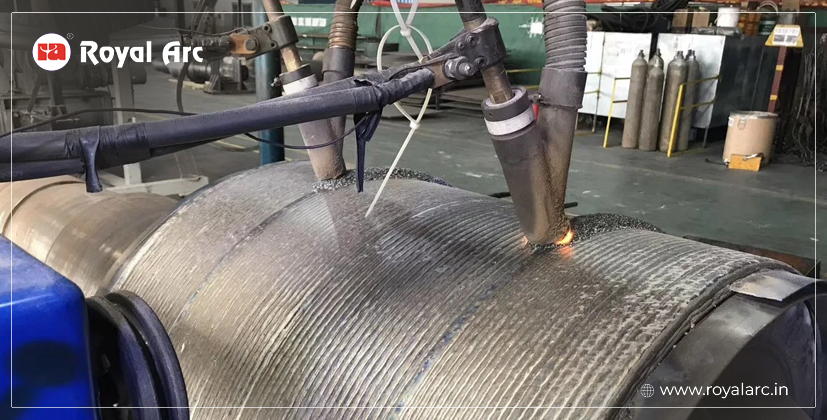
Are you looking to increase the productivity of your flux-cored wire operations? Flux cored wire can be a great way to improve the efficiency of your welding process, but it’s important to optimise its performance to get the most out of it. Flux cored wires are a great option for welding because they provide high deposition rates, good weldability, and low fumes. However, there are a few things you should know before using them. This blog post will cover everything you need about flux-cored wires to make the best decision for your next welding project. They offer high deposition rates and good weldability. Additionally, they produce fewer fumes than other welding methods, which is important for your health and the environment. Why is flux-cored wire performance very important? There are a few key factors that make this type of wire so important: It provides superior arc stability and low spatter levels compared to other types of wires. It is due to the way the flux core helps shield the arc from oxygen and other atmospheric gases. Flux cored wire produces less slag than solid wire, which means it requires less time for cleanup after welding. People can use it with AC and DC power sources, giving welders more flexibility when working on projects. If you’re looking for a high-quality welding wire that will provide superior performance, flux cored wire is the way to go. Keep these factors in mind when deciding, and you’ll be sure to find the right wire for your needs. Flux cored wire provides many benefits for those who frequently weld. The superior arc stability and low spatter levels are just two of the reasons why this type of wire is so important. Factors that contribute flux cored wire performance Flux cored wire provides many benefits over traditional solid wire electrodes, including higher deposition rates, improved operator control, and easier out-of-position welding. Flux cored wire can provide excellent weld quality and productivity with proper equipment and techniques. In addition, optimising flux cored wire performance can result in significant cost savings. Several factors can impact the performance of flux cored wire. The type of metal, the welding process used, the amperage and voltage settings, and the travel speed are just a few variables that can affect weld quality and deposition rates. By understanding how these factors influence weld quality and productivity, operators can make adjustments to optimise performance. More deposition rates are generally possible with flux cored wire than solid wire electrodes. It is due to the higher current density used with flux cored wire. In addition, the operator has more control over the welding process when using flux cored wire. It allows for better weld bead placement and improved out-of-position welding. The main factors that affect the performance of a flux cored wire are the chemical composition of the wire and the gas used for shielding. The chemical composition of the wire determines how well it will flow and how strong the arc will be. The gas used for shielding protects the weld from contamination by oxygen and other gases. Many types of flux cored wires are available, each with its characteristics. The type of wire you use will depend on your welding application. For example, wires are designed for thin welding metal sheets, while others are better suited for thicker materials. Gas shielded wires usually produce less spatter and have a smoother arc than self-shielded wires. They also tend to be more expensive. Self-shielded wires are easier to use because they don’t require a gas tank and hose. They are less expensive. However, they produce spatter and have a rougher arc. Flux cored wires are easy to use and provide good welds. Here are a few tips to help you do perfect optimisation – Use the right gas mix: The gas mix used for flux-cored welding is important, as it can affect the arc’s stability and the weld’s quality. Consult the flux cored wire manufacturer to find the right mix for your specific wire. – Adjust your travel speed: The speed you travel along the weld joint can also impact productivity. If you’re Welding too slowly, you’ll increase the amount of time it takes to complete a weld, while welding too quickly can cause problems with bead appearance and overall quality. Try different speeds and see what works best for you. – Maintain proper tension on the wire: It’s important to maintain proper tension while welding, as this can help prevent other feeding problems. By following these tips, you can optimise the performance of your flux cored wire and improve your welding productivity.
When to Use Flux Cored Wires: The Right Time for the Right Job

There are a lot of variables to consider when it comes time to select the welding wire for your job. One of the most important factors is the type of metal you are welding. Different wires work better with different metals. Another important factor is the thickness of the metal. If you are welding a thin piece of metal, you will need a different wire than if you’re welding a thick piece of metal. In this blog post, we’ll discuss when to use flux cored wires and why they are such an important tool for welders! Flux cored wires are highly suitable for thicker metals. They are also great for welding in difficult positions. When welding thick metal, it’s important to have a strong arc that can penetrate the metal. Flux-cored wires can provide this type of arc. The flux inside the wire helps shield the weld from contaminants, which can help improve the weld’s quality. If you’re welding in a difficult position, such as overhead, horizontals, or verticals, flux-cored wires can make getting a good bead on the weld easier. If you are looking for a high-quality weld, you should consider using flux-cored wires. They are an essential tool for welders and can help you get the best results on your projects! Flux cored wires are not all created equal. Each type of wire fits for a specific purpose and job. To get the best results, it’s important to select the right flux-cored wire for the task at hand. When can you use flux-cored wires? Flux cored wires can be used in a wide range of welding applications and are particularly well suited for jobs that require high deposition rates, such as thick plate welding. However, there are some things to keep in mind when using flux-cored wires. Here are some tips on when to use flux-cored wires: When you need high deposition rates: Flux-cored wires are great for high deposition rate welding, making them ideal for thicker plates. Welding out of position: Flux-cored wires excel at out-of-position welding due to their slag system, which helps prevent weld pool contamination. When you need good impact toughness: Many flux cored wires have good impact toughness, making them a great choice for welding jobs that require high levels of impact resistance. So, when should you use flux-cored wires? Flux cored wire manufacturers suggest to use when you need high deposition rates or are welding out of position, flux-cored wires may be the right choice. Remember that not all flux-cored wires are created equal – choose the right wire for your particular job. Common flux cored wires and their applications Let’s take a look at some of the different types of flux-cored wires and their applications: E71T-GS: This wire is ideal for general-purpose welding, especially on thin gauge metals. It produces very little spatter and is suitable to use for gasless or gas-shielded setup. E71T-11: This is another great option for general-purpose welding, but it can also be used on thicker metals. It produces less spatter than the E71T-GS and can be used gasless or with a gas-shielded setup. E70T-GS: This wire is useful in gas-shielded welding setup. It’s great for general-purpose welding on thin gauge metals but also suitable for thicker metals. E70T-11: This wire is suitable for gas-shielded welding setup. It can be used on thin, thick gauge metals and produces very little spatter. Things to consider before using flux cored wires for welding There are a few key factors to remember when deciding whether to use a flux-cored wire. The first is the type of metal you are welding. Flux-cored wires work best on thicker metals, providing more penetration than other wires. They can also be used on thinner metals, but it’s important to be aware that they can cause burn-through if not used properly. Another factor to consider is the amount of time you have to weld. Flux-cored wires have a shorter arc time than other types of wires, so they’re ideal for quick welds. Finally, remember that flux-cored wires produce more fumes than other types of welding wire, so be sure to use proper ventilation when using them. Now that you know more about flux-cored wires, it’s time to put them to use! If you’re welding on thicker metals or need to weld quickly, flux-cored wires are the way to go. Just be sure to use proper ventilation and follow all safety precautions, and you’ll be able to get the job done right. Are you looking for a reliable flux-cored wire manufacturer? Get in touch with us!
Everything You Need to Know About Flux Cored Wires: A Comprehensive Guide
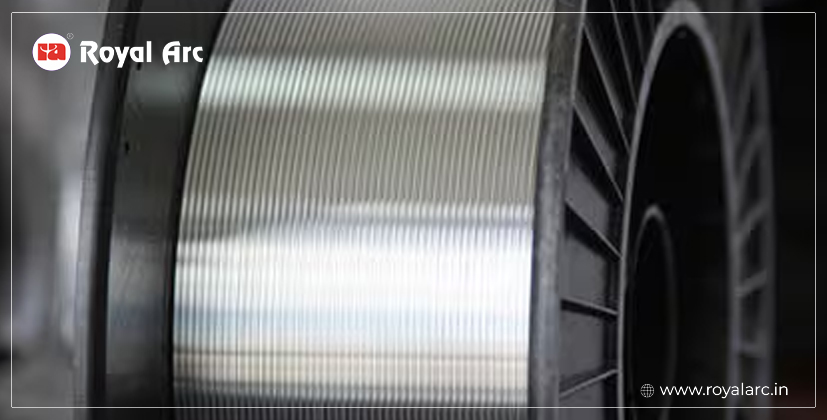
If you’re looking for an alternative to traditional welding wires, flux cored wires might be the perfect option. Read on to learn more about flux cored wire welding and to determine if it’s the right choice for your project. In the welding industry, flux cored wires are becoming an increasingly popular choice for many welders. They offer several advantages over other types of welding wire, and there is a lot of confusion about them. In this comprehensive guide, we will dispel any myths about flux-cored wires and teach you everything you need to know about them! If you are a welder, you have probably heard of flux cored wires. What do you need to know about them? This comprehensive guide will cover topics such as the history of flux-cored wire, its types, how to use them, and more! Benefits of Flux Cored wire application There are many benefits to using flux-cored wires. One benefit is that they produce less smoke and fumes than solid wires. This is so because flux, which is used to make the wire’s core, aids in preventing the formation of welding fumes. This is true because the flux used to create the wire’s core helps to stop welding fume formation. Another benefit of using flux-cored wires is that they tend to be more forgiving than solid wires. This means they are less likely to cause problems if you make a mistake while welding. Additionally, flux cored wires tend to have better arc stability than solid wires, which can help to improve the quality of your welds. Overall, flux cored wire manufacturers in India offer solid wires with several benefits. If you want to improve your welding quality or reduce the amount of smoke and fumes produced during welding, then flux-cored wires may be the right choice for you. If you have any questions about using flux-cored wires or would like to learn more about welding in general, please feel free to contact us. We would be happy to help you find the answers that you are looking for. What makes flux-cored wires to be unique from others Flux-cored wires are unique because they have a higher deposition rate than solid wires. This is because the core of the wire comes from powder, which increases the surface area that can be melted and deposited onto the base metal. Flux-cored wires typically have a lower operating cost than solid wires since they do not require gas shielding. There are some disadvantages to using flux-cored wires as well. One drawback is that they can produce more welding fumes than solid wires since the flux within the core of the wire can vaporise during welding. Additionally, it can be more difficult to achieve a consistent weld bead using flux cored wire since the powder within the core can cause sporadic melting. Fluid-cored wires are a great option for those looking to increase their welding deposition rate or lower operating costs. However, it is important to know the potential disadvantages before using them. What is the best way to use flux-cored wires? There are a few things to consider when deciding which type of wire to use for your project. The first is the materials you’ll be welding if you’re working with thicker metals. Thinner metals welding works best with flux-cored wires because they provide a cleaner weld with less spatter. They offer more penetration and are less likely to blow through the metal. Another thing to keep in mind is the welder itself. Some machines can’t handle solid wires, so you’ll need to check before purchasing. Flux cored wires also tend to be more forgiving than solid wires, so if you’re a beginner welder, they might be the way to go. Are you looking for reliable flux cored wire manufacturers in India? Get in touch with us!
Flux Cored Wires: The Pros and Cons
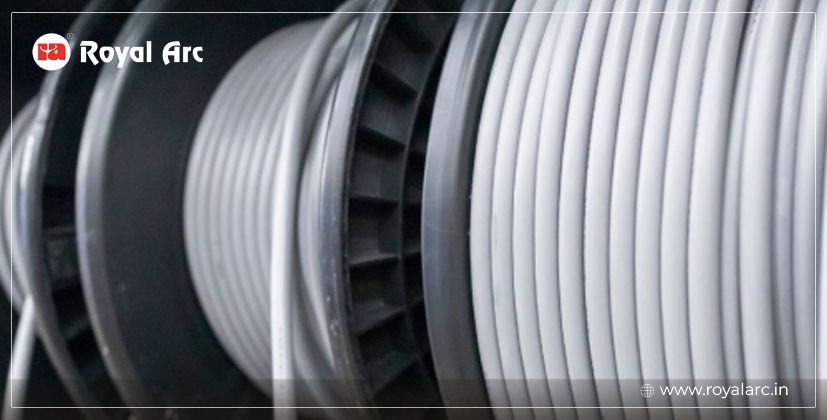
If you’re in the market for a new welding wire, you may have heard of flux-cored wires. We’ll discuss the pros and cons of the wire. There is a lot of talk about flux cored wire these days. Some welders swear by flux-cored wires, while others think they waste time. This blog post will discuss the benefits and drawbacks of using flux cored wires for welding. When it comes to welding, there are a variety of different types of wires that can be used. One of the most popular is flux cored wire. This type of wire has been around for many years and is known for its quality welds. However, like everything else, a flux-cored wire has pros and cons. In this blog post, we will take a closer look at the pros and cons of flux-cored wires so that you can make an informed decision about whether or not this type of wire is right for your welding needs! The key benefits of flux-cored wires Flux cored wires are an important part of the welding process. It aids in weld quality improvement and has a variety of uses, including fabrication of agricultural equipment, general home maintenance, and auto body repair. Here are some of the main benefits of flux-cored welding wire: 1. It provides a higher deposition rate than solid wires, which means it can weld thicker materials in less time. 2. It produces less spatter than other types of welding wire, making it ideal for use in sensitive environments such as food processing plants or hospitals. 3. It is more forgiving than solid wires, meaning that it can be used on rusty or dirty metals without compromising the quality of the weld. 4. It is available in various sizes and grades to suit any welding application. The role of flux-cored wires in welding. A metal core and a flux coating make up its construction. The flux coating helps to protect the weld from contamination and provides a gas shield that protects the weld from oxidation. The welding electrode known as flux cored wire is one such type. Flux cored wire is often used for welding in difficult-to-reach places or when there is limited access to oxygen. It can also be used for welding thin materials or high-speed welding. Flux cored wire is available in different sizes and can be used with different types of welding machines. Pros and Cons of Flux-cored wires. Welders need some experience using flux cored wire as it can be difficult to control. Once you get the hang of it, flux cored wire can be a great way to weld. Talk to a professional welder if you are considering using flux cored wire for your next welding project. They will be able to advise you on how to use it correctly. One of the biggest advantages of flux cored wire is that it can be used in all positions. This means you can weld vertically, horizontally, and even overhead without issues. This is a huge advantage over other welding wires, which can only be used in certain positions. Pros: Another big advantage of flux cored wire is that it doesn’t require a shielding gas. This can save you a lot of money because you won’t have to purchase a separate tank or bottle of gas. Additionally, this means there are no fumes to worry about when using this type of wire. Cons There are also some disadvantages to using flux cored wire. It can be more expensive than other types of welding wire. Additionally, it can be difficult to find this type of wire in some areas. Finally, flux cored wire is not as strong as other types of welding wire. Only you can decide whether or not a flux cored wire is right for your needs. This type of wire might be a good option if you need a quality weld that can be done in all positions and doesn’t require a shielding gas. However, if you are looking for a cheaper option or one that is easier to find, then another type of welding wire might be a better choice. We hope this blog post has helped you learn more about flux cored wire to make an informed decision! Get in touch with us for any flux cored wires!
